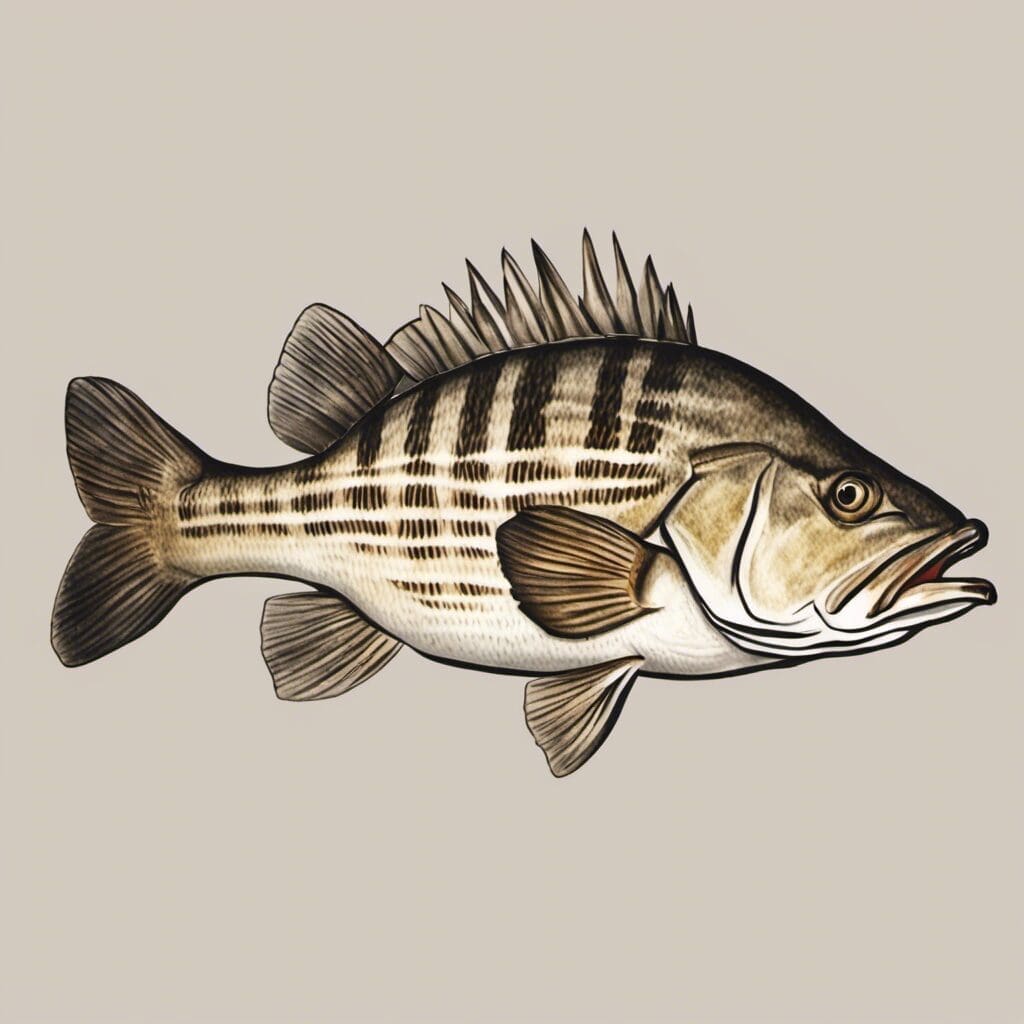Introduction
The Barred Sand Bass, scientifically known as Paralabrax nebulifer, is a member of the familial class Serranidae. This family is known as the groupers and sea basses.
Conservation Status
In regards to its conservation status, the Barred Sand Bass is currently classified as Vulnerable according to the World Register of Marine Species (WoRMS). Efforts to conserve this species include regulations on fishing practices and bag limits.
Statistics
| Characteristic | Average | Range |
|---|---|---|
| Length | 17 inches (43 cm) | Up to 26 inches (66 cm) |
| Weight | 3.5 pounds (1.6 kg) | Up to 13 pounds (5.9 kg) |
| Average Lifespan | 12 Years | N/A |
Distribution
The Barred Sand Bass is predominantly found in the Eastern Pacific region, mainly within the coastal waters of Southern California and Mexico. The species does not display a specific migratory pattern, but tends to move into deeper water during the colder months.
Habitats
The Barred Sand Bass generally prefers marine or saltwater habitats. They are typically found in depths ranging from 30 to 215 feet. However, they are also known to inhabit bay environments.
When and Where to See
The prime time to spot the Barred Sand Bass is during their summer spawning season, which typically occurs between June and September. You’re most likely to find them during the daytime hours when they are actively feeding.
Best Fishing Locations
- San Diego Bay, California
- Santa Monica Bay, California
- Long Beach Harbor, California
- Newport Harbor, California
- San Francisco Bay, California
- Mission Bay, California
- La Jolla, California
- Coronado Island, Mexico
- Gulf of Santa Catalina, Mexico
How to Catch
Preferred bait for the Barred Sand Bass includes anchovies, squid, and mackerel. They respond well to bottom fishing techniques. Best time of day or season for fishing would be during their summer spawning season, specifically in the morning or evening when they are most active.
Identification Guide
Barred Sand Bass is easily identifiable by its olive green to brown coloration with dark vertical bars and a whitish underside. They have a characteristic F-shaped mark below the dorsal fin.
Culinary
Barred Sand Bass is considered a tasty fish, boasting a mild, sweet flavor and a firm, flaky texture. Nutritional value consists of high-quality proteins, omega-3 fatty acids and vitamin D. Simple grilling or pan-frying methods bring out the best flavors.
Additional Information
Barred Sand Bass is a slow-growing, late-maturing species known to live in structured habitats such as rocky reefs, kelp forests, or shipwrecks. Its major threat comes from overfishing. Its historical and cultural significance is mainly related to sportfishing and its value as a food resource in both commercial and recreational fisheries.

